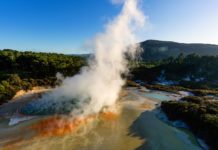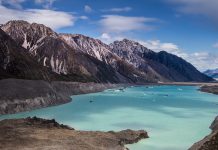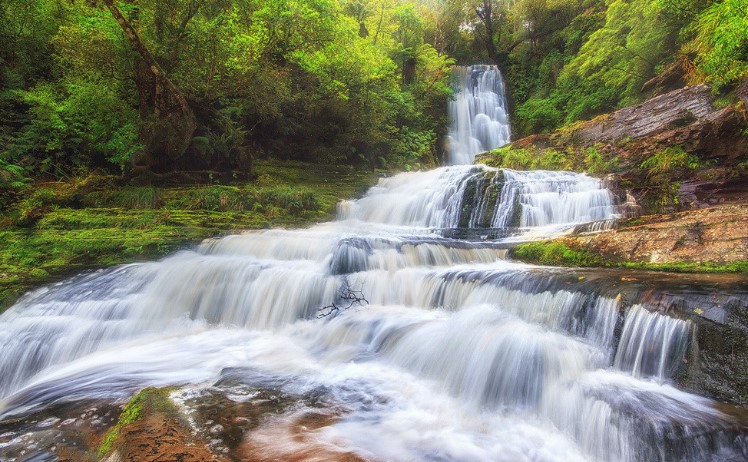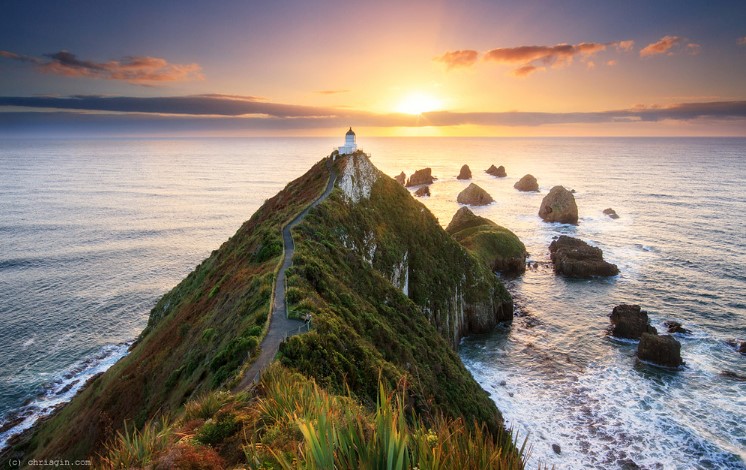Aboriginal Australia
A visit to Australia would not be complete without experiencing the rich cultures of Aboriginal and Torres Strait Islander peoples. Visitors have an opportunity to learn and interact with the oldest continuous cultures in the world and share a way of life that has existed for over 50,000 years.
History of Aboriginal Australia
Many academics believe Indigenous Australians came here from somewhere else, with scientific evidence placing them on the continent at least 40,000 to 60,000 years ago. Aboriginal people, however, believe they have always inhabited the land. At the time of European contact, the Aboriginal population was grouped into 300 or more different nations, with distinct languages and land boundaries. From the desert to the sea, Aboriginal people shaped their lives according to their environments and developed different skills and a wide body of knowledge on their territory.
Colonised
The effects of colonization started immediately after the Europeans arrived. It began with the appropriation of land and water resources and an epidemic of diseases—smallpox killed around half of the Indigenous people who were native to Sydney Harbour. A period of resistance occurred as Aboriginal people fought back to retain their land and way of life; as violence and massacres swept the country, many were pushed away from their traditional lands. Over a century, the Aboriginal population was decimated by 90%.
Rights & Reconciliation
The relationship between Indigenous Australians and other Australians hasn’t always been an easy one. Over the years several systematic policies have been put in place, but these have often had underlying and conflicting motives that include control over the land, decimating the population, protection, assimilation, self-determination, and self-management. The history of forced resettlement, removal of children, and the loss of land and culture can never be erased, even with governments addressing some of the issues. Current policies focus on ‘closing the gap’ and center on better delivery of essential services to improve lives, but there is still great disparity between Indigenous Australians and the rest of the population, including lower standards of education, employment, health, and living conditions; high incarceration and suicide rates; and a lower life expectancy. Throughout all of this, Aboriginal people have managed to maintain their identity and link to country and culture. Although there is a growing recognition and acceptance of Indigenous Australians’ place in this country, there is still a long way to go.
The Stolen Generations
When Australia became a federation in 1901, a government policy known as the ‘White Australia policy’ was put in place. It was implemented mainly to restrict nonwhite immigration to Australia, but the policy also had a huge impact on Indigenous Australians. Assimilation into the broader society was encouraged by all sectors of government, with the intent to eventually ‘fade out’ the Aboriginal race. A policy of forcibly removing Aboriginal and Torres Strait Islander children from their families operated from 1909 to 1969. It is estimated that around 100,000 Indigenous children—or one in three—were taken from their families; they became known as the Stolen Generations. On 13 February 2008, Kevin Rudd, then prime minister of Australia, offered a national apology to the Stolen Generations.
Aboriginal Culture
Aboriginal culture has never been static and continues to evolve with the changing times and environment. New technologies and mediums are now used to tell Aboriginal stories, and cultural tourism and hospitality ventures where visitors can experience an Aboriginal perspective have been established. You can learn about ancestral beings at particular natural landmarks, look at rock art that is thousands of years old, taste traditional foods, or attend an Aboriginal festival or performance.
Torres Strait Islanders
Aboriginal society is a diverse group of several hundred sovereign nations. Torres Strait Islanders are a Melanesian people with a separate culture from that of Aboriginal Australians, though they have a shared history. Together, these two groups form Australia’s Indigenous peoples.
The Land
Aboriginal culture views humans as part of the ecology, not separate from it. Everything is connected—a whole environment that sustains the spiritual, economic, and cultural lives of the people. In turn, Aboriginal people have sustained the land over thousands of years through knowledge passed on in ceremonies, rituals, songs, and stories. Land is intrinsically connected to identity and spirituality; all land in Australia is reflected in Aboriginal lore, but particular places may be significant for religious and cultural beliefs. Sacred sites can be parts of rocks, hills, trees, or water and are associated with an ancestral being or an event that occurred. Often these sites are part of a Dreaming story and link people across areas.
The Arts
Aboriginal art has impacted the Australian landscape and is now showcased at national and international events and celebrated as a significant part of Australian culture. It still retains the role of passing on knowledge, but today it is also important for economic, educational, and political reasons. In many Indigenous communities art has become a major source of employment and income.
Rock Art
Remember, rock art is the oldest form of human art, and Aboriginal rock art stretches back thousands of years. Rock art is found in every state of Australia, and many sites are thousands of years old. There are a number of different styles of rock art across Australia. These include engravings in sandstone and stencils, prints, and drawings in rock shelters. Some of the oldest examples of engravings can be found in the Pilbara in Western Australia and in Olary in South Australia, where there is an engraving of a crocodile.
All national parks surrounding Sydney have rock engravings and can be easily accessed and viewed. At Gariwerd (the Grampians) in Victoria, there are handprints and hand stencils. In the Northern Territory many of the rock-art sites have patterns and symbols that appear in paintings, carvings, and other cultural material. Kakadu National Park has over 5000 recorded sites, but many more are thought to exist.
Read More: Lake Bumbunga: Breathtaking Pink Lake in South Australia







